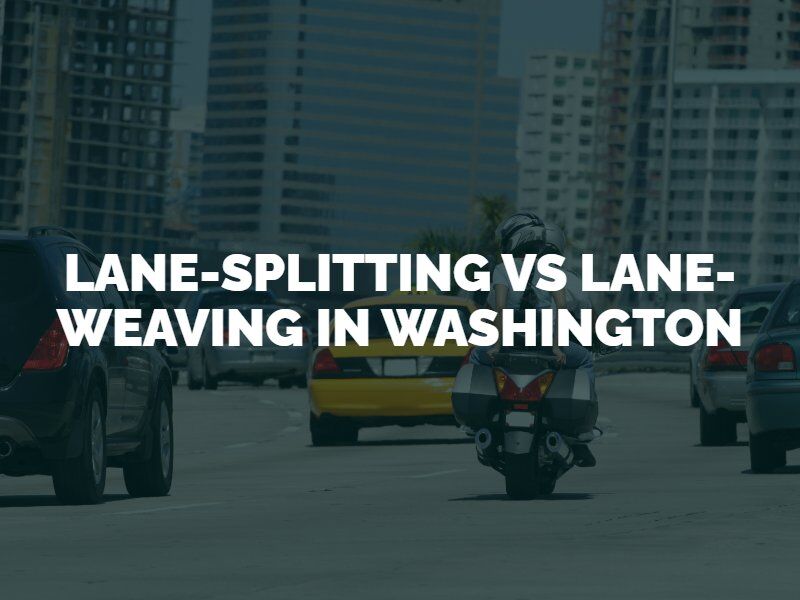Motorcyclists enjoy the exhilaration of exploring the open road, but when the thrill of speeding along Washington’s scenic roadways and exciting urban meccas becomes the exasperation of slow or stalled traffic, it feels like the fun is over. Because of a motorcycle’s slim design and easy maneuverability, some motorcyclists in Washington give in to the temptation to leave traffic snags behind by lane-splitting or lane weaving.
This practice allows a rider to continue moving forward even when traffic has stalled around them. But what exactly is lane splitting vs lane weaving, and are these methods of beating traffic on a bike legal in Washington?

Lane-splitting is the practice of driving a motorcycle along the white line between lanes of slow-moving traffic going in the same direction. It’s also sometimes called “white-lining.” Lane-splitting essentially creates a new lane for motorcycles, allowing the rider to take advantage of a motorcycle’s slim profile to continue moving ahead at a faster speed when larger vehicles are slowed due to traffic back-ups. In the event you’ve been in an accident related to lane-splitting, the Seattle personal injury attorneys of Fang Law Firm handles cases relating to motorcycle accidents.
Lane-splitting is NOT legal in Washington. Lane-splitting motorcyclists may be fined $100 and receive further citations that increase the penalties.
Lane splitting is currently only explicitly legal in California, where the law specifies that motorcyclists may lane-split on all divided or undivided highways, but only when traffic is moving at less than 40mph. While lane-splitting, motorcyclists may travel no more than 10mph faster than the general speed of the traffic flow.
Lane-splitting is illegal in Washington and all other states except California, but a handful of other states have no laws against lane-splitting, causing many riders to consider the practice de facto legal in those states. However, it’s up to the discretion of local law enforcement to prevent or allow lane-splitting in their area.
Lane-weaving is also sometimes called “lane filtering.” This is the practice of weaving between lanes of stopped traffic to move to the head of the line at stop lights or in traffic jams. Unlike lane-splitting with slow-moving traffic, lane-weaving only occurs when traffic is stationary. Lane weaving is also an illegal practice in Washington. If you were in a motorcycle accident due to lane-weaving or lane-splitting, contact the Seattle motorcycle accident lawyers.
A growing number of states now allow lane-weaving or filtering, some with additional caveats, such as Montana’s laws which specify that motorcyclists may only ride at 20mph or less while lane-weaving.
There have been several failed attempts in Washington to legalize lane-weaving, most recently in 2019.
While the traditional thinking holds that it’s unsafe for motorcyclists to ride between lanes of traffic, many proponents of the practice advocate for changes to Washington’s and other state’s laws against lane-splitting and lane-weaving because it allows bikers to move into safer positions in traffic. A Berkeley study on lane-splitting in California indicates that lane-splitting can benefit motorcycle safety when it’s done properly in lanes of traffic moving less than 50mph and when riders do not exceed the speed of surrounding traffic by more than 15mph.
Lane-splitting decreases the chances of a motorcyclist being rear-ended, allows them to avoid road debris and other hazards, and enables them to move into positions that make them more easily visible to other drivers. Additionally, lane-weaving or filtering to the front in lines of stopped traffic at traffic lights puts motorcyclists at a safety advantage because they are not trapped between two vehicles and have greater visibility when crossing intersections.
While the state’s current laws remain in place, motorcyclists must adhere to the laws against lane-splitting and weaving as with all traffic laws. With growing awareness of the safety benefits of these practices, Washington may one day join the other states in allowing lane-splitting and weaving in the future.